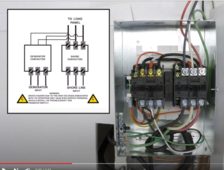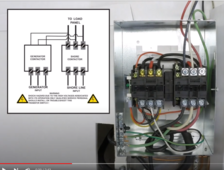Ampster
Renewable Energy Hobbyist
I did not build a new house but the concept is the same. When I purchased the home, I knew I would have to replace the main service panel because it was unsafe. Therefore I bought a solar ready main service panel. That meant that it had a larger bus bar than the main breaker. It was located on one wall of my garage and I located two sub panels on the inside wall of that same garage. I designated one panel my critical or essential loads panel and the other my high loads panel. Those panels had 20 spaces for regular breakers or 40 spaces for half space breakers. The sub panels are close enough that if I change my mind on what is an essential load, I could swing the wires from one to the other. I also used wiring gutters on the top and botton for ease of rewiring. The top gutter contained all my load circuits and the bottom gutter was for the big cables from the main service panel to each of the subpanels.I have been trying to figure out how to have power from the grid when the house is built and then add my own solar later.
Later when I installed solar it was a simple matter of putting the hybrid inverter on the same wall as the subpanels and wiring it through the wiring gutters. In the case of new construction the only thing I would add is a conduit from your roof to the area where your inverter is going to be. If you know your are going with micros, you do not need conduit like you would if you are running DC to your inverters. You just need to have a conduit from your attic to your roof and have your roofer flash that entry point. I did a self install and used micros for the grid tie capability. In retrospect, if I had known how much the power was going to go out, I probably would have started with a hybrid inverter with DC coupled solar and later incrementally added AC coupled solar with micros later. At least with a SolArk it is best to have a high ratio of DC coupled solar to AC coupled solar when the grid is down. AC coupled solar is easy to add incrementally to different roof pitches and orientation without the complications of matching MPPT inputs. As rates shifted in California it also became optimal economically to have some west facing panels to capture more of the solar at the peak rates that began at 4PM. My system is essentially grid tie but for most of the year I am able to be self sufficient and self consume much of my solar. I will never be able to be totally off grid because my winter loads are often greater that production, especially when we have weeks of cold cloudy weather.
Last edited:









